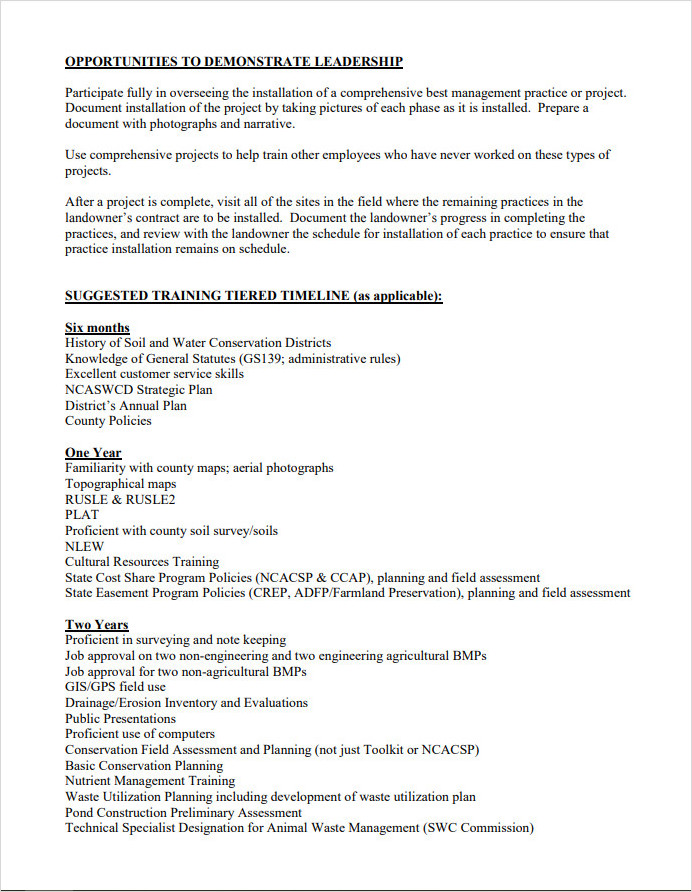
A new employee training plan is a document that outlines the training program designed for new hires in an organization. It serves as a roadmap for employees to follow and helps ensure that they receive the necessary skills and knowledge needed to perform their jobs effectively.
This plan typically includes details about the training objectives, schedule, resources, and evaluation methods.
Why is a New Employee Training Plan Important?
A new employee training plan is essential for several reasons:
- Effective Onboarding: A well-structured training plan ensures that new employees are properly onboarded and equipped with the necessary skills to perform their jobs.
- Consistency: A training plan provides consistency in training delivery, ensuring that all new employees receive the same level of knowledge and skills.
- Efficiency: By having a clear training plan in place, organizations can streamline the onboarding process and reduce the time it takes for new employees to become productive.
- Employee Engagement: A comprehensive training plan shows new employees that the organization values their development and is committed to their success, leading to increased engagement and retention.














How to Create a New Employee Training Plan
Creating a new employee training plan involves several key steps:
1. Identify Training Needs
Start by identifying the specific training needs of new employees. This can be done by analyzing job descriptions, talking to managers, and conducting a skills gap analysis. Determine the essential skills and knowledge that new employees need to perform their jobs effectively.
2. Define Training Objectives
Once the training needs are identified, define clear and measurable training objectives. These objectives should outline what new employees should be able to accomplish after completing the training program.
3. Design the Training Program
Design the training program based on the identified training needs and objectives. Determine the training methods, materials, and resources that will be used. Consider a mix of on-the-job training, classroom sessions, online modules, and mentoring.
4. Develop Training Materials
Create or gather the necessary training materials, such as presentations, handouts, videos, and interactive exercises. Ensure that the materials are clear, concise, and engaging.
5. Establish a Training Schedule
Develop a training schedule that outlines the duration and sequence of the training program. Consider the availability of trainers, resources, and the time required for employees to absorb and practice what they have learned.
6. Assign Trainers or Mentors
Identify and assign trainers or mentors who will deliver the training and provide guidance to new employees. Ensure that these individuals have the necessary expertise and experience to effectively train and support new hires.
7. Implement the Training Program
Roll out the training program to new employees according to the established schedule. Monitor the progress of each employee and provide feedback and support as needed. Encourage active participation and engagement during training sessions.
8. Evaluate Training Effectiveness
Regularly evaluate the effectiveness of the training program by gathering feedback from new employees and assessing their performance. Make necessary adjustments to improve the training program and address any gaps or areas of improvement.
Example of a New Employee Training Plan
Here is an example of how a new employee training plan may look:
1. Orientation (Day 1)
- Objective: Introduce new employees to the organization’s culture, policies, and procedures.
- Training Activities: Welcome presentation, company tour, introduction to key personnel, review of employee handbook.
2. Job-specific Training (Days 2-5)
- Objective: Provide new employees with job-specific knowledge and skills.
- Training Activities: On-the-job training, shadowing experienced employees, hands-on practice, and role-playing exercises.
3. Product/Service Training (Days 6-10)
- Objective: Familiarize new employees with the organization’s products or services.
- Training Activities: Product/service presentations, product/service demonstrations, case studies, quizzes.
Tips for a Successful New Employee Training Plan
Consider the following tips to ensure the success of your new employee training plan:
- Be Clear and Concise: Use simple language in your training materials to ensure that new employees can easily understand and follow the content.
- Provide Ample Practice Opportunities: Include hands-on exercises, role-playing, and simulations to allow new employees to apply what they have learned.
- Continuously Improve: Regularly review and update your training plan to incorporate feedback, address gaps, and improve the effectiveness of the training program.
- Encourage Feedback: Create a culture of open communication and encourage new employees to provide feedback on the training program. Use their feedback to make necessary improvements.
- Make it Engaging: Incorporate interactive elements, such as videos, quizzes, and group activities, to keep new employees engaged and motivated throughout the training program.
- Provide Ongoing Support: Offer ongoing support and resources to new employees even after the training program is completed. This can include mentorship programs, online resources, and regular check-ins.
Free New Employee Training Plan Template!
A new employee training plan is a valuable tool for organizations to ensure that new hires receive the necessary training and support to succeed in their roles. By following a well-defined training plan, organizations can streamline the onboarding process, increase employee engagement, and set new employees up for success.
New Employee Training Plan Template – Download